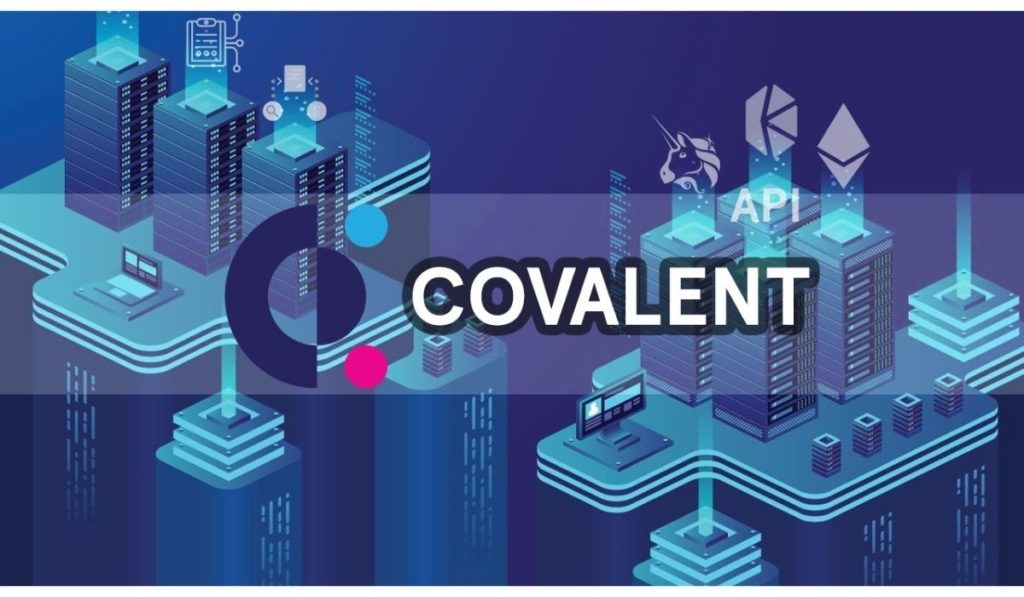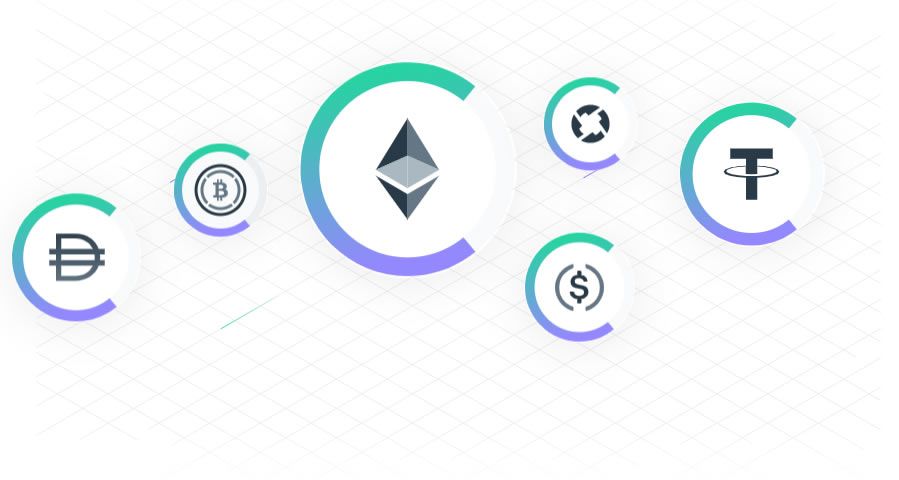2021-10-18 16:00 |
One of the problems facing Web 3.0 is the unification of scattered decentralized networks. Covalent is addressing this issue. It gives developers access to smart contract data to survey the entire blockchain ecosystem.
Covalent makes it easier for investors to glean insights and performance of digital assets. This is done through its unified API (application programming interface) that indexes blockchains. These range from NFTs to DeFi protocols.
A brief historyGanesh Swami and Levi Aul started Covalent, expanding to a 35-person team. Across all personnel, they have extensive cumulative blockchain development experience, ranging from database engineers to blockchain and data scientists.
Swami is the current Covalent CEO with a background in physics and developing algorithms in the biopharma sector. He turned to a blockchain career after his ventures in cloud computing.
Aul serves as CTO. He is a software engineer with practical experience building one of the first Canadian crypto exchanges. Aul also helped develop the Apache CouchDB database at IBM.
“Our entry into the blockchain industry realized a glaring heap of disorganized, unstructured, and potentially valuable data across different blockchain protocols, chains, projects, and products, each producing data in various formats,” explain Swami and Aul.
“Therefore, in 2017, to increase transparency, we set off to build Covalent. An enterprise-grade solution that enables us to better arm the blockchain space with usable data with a unified API that brings data transparency and visibility to digital assets,” they said.
Covalent also has the Covalent Alchemist Ambassador Program, which expands its core team globally and brings in more partners interested in making sense of blockchain data. Currently, this community has over 2,500+ alchemists.
“They are creatives, builders, and educators unlocking the one billion possibilities,” says the team.
Covalent’s backers are well-known in the crypto space. They include Coinbase Ventures, Binance Labs, Delphi Digital, Hashed Ventures, 1kx, Woodstock, Mechanism Capital, CoinGecko, Alameda Research, and many others.
Most recently, Covalent raised $10M in a public sale on CoinList. Previously Covalent has secured $2 million in funding led by Hashed Ventures. In addition to a round in 2020 for $3.1 million co-led by Woodstock Fund, 1kx Capital, and Mechanism Capital. Overall, the team has raised about $15.1 million over five funding rounds.
Covalent building Web 3.0Originally envisioned as a semantic web that would transform the internet as we know it, Web 3.0 has gradually moved toward decentralization instead.
Blockchain networks rapidly spread to envelope every kind of service. These range from finance and crowdsourcing to social media and live-streaming platforms.
By employing blockchain technology, smart contract platforms give users ownership over their data, an easy path to monetization, and remove the threat of single points of failure. Covalent builds upon those features by aggregating data from major blockchains.
These include:
EthereumBinance Smart ChainPolkadotPolygonAvalancheNearAlong with nine other smart contract platforms, Covalent’s API makes it possible to index data within its smart contracts. Through this unified interface, Covalent creates a cross-chain flow of data that can then be used to validate, form, index, retrieve, and store blockchain content.
In short, Covalent is a blockchain network used as a cross-chain data aggregator. When it comes to the DeFi ecosystem, this means that Covalent API offers both DeFi developers pull out wallet-specific information regardless of blockchain. Many DeFi protocols have already taken advantage of Covalent, including Balancer, 0x, PolkaStarter, Consensys, Zeroswap, Zerion. The protocol now has over 500 projects using its API.
Furthermore, these developers can use Covalent API to create their own API data outflows and then list new insights on the blockchain marketplace.
“Covalent’s vision is to empower the pioneers of tomorrow by providing the richest and most robust data infrastructure for the entire blockchain ecosystem. Think of us as the Google of Blockchains. And we provide this data through a single, unified API that can be used by any developer at any skill level. No infrastructure to set up. No complex code to write,” says the team.
How does Covalent aggregate blockchain data?Covalent software package facilitates a granular level of blockchain data retrieval, including:
Smart contractsTransactionsWallet addressesThrough Covalent’s Blockchain Data API, users can query this data within a single interface. When these data points are extracted regardless of blockchain’s origin, Covalent formats them into so-called block specimens.
To facilitate the process of querying, retrieval, and data storage, Covalent employs six types of tools:
Directory Service Nodes — Make it easier to match a user’s query to specific blockchain nodes based on the user’s price point.Validators — As with other blockchains, validators ensure data integrity, incentivizing honest behavior and punishing malicious behavior through the slashing mechanism (removal of CQT tokens).Indexers — Responsible for retrieving data accurately and publishing them on the Covalent network.Block Specimen Producers — For a CQT reward, they run data-collection nodes on chains that are targeted for data aggregation. With the data collected, they publish it to storage nodes, also run by block-specimen producers.Storage Request Responders — In cooperation with other nodes, they retrieve data requested by Covalent queries and submit the requests to the Covalent network.Query Request Responders — Respond to off-blockchain query requests coming from Covalent API.Operating between indexing nodes and Covalent API, these processes then churn out actionable data.
It is worth noting is that the Covalent network is highly user-friendly. Meaning, you don’t need to know how to code to integrate Covalent API into your project.
“Blockchain data is purported to be public, but deep, granular, and historical blockchain data is actually very, very difficult to access, even for a trained developer. Covalent provides a unified API for easy access to this data so that developers and companies can have true visibility into their crypto assets, whether for personal use or for their end-user experience,” says the team.
Covalent tokenomicsThe Covalent Query Token (CQT) powers the Covalent network. It is a staking asset. Similar to other DeFi governance tokens, stakeholders can use them to vote on development proposals and decide the direction of other network parameters.
When validators respond to queries with accurate answers, they earn CQT rewards as fees. The CQT tokens are capped at one billion, with about 49,665,076 CQT in circulation.
CQT coins are allocated as follows:
Tokens are a key part of making blockchain networks decentralized, which is the case with Covalent as well. Since the Covalent network launched in April, the appreciation of CQT coins has already made their investors happy, rising by 164% to its press-time level of $1.44 per CQT.
CQT coin’s ATH (all-time-high) price was $2.06 on August 14, 2021.
Covalent transactions can also be viewed with CQT Scan, equivalent in purpose to EtherScan. Additionally, CQT Scan has an extra benefit in that users can glean patterns from various datasets such as miner addresses, total transactions, block times, etc. Of course, these insights extend to all supported blockchains.
Covalent’s future outlookAs of August 9, the project integrated with Moonbeam, extending to Moonriver parachain on the Kusama network. Moonbeam is one of the more popular projects growing out of the Polkadot ecosystem as a smart contract platform that bridges Polkadot parachains with Ethereum and Bitcoin.
With Moonriver indexed by Covalent, the data-sleuthing platform has positioned itself to take advantage of Moonbeam’s growing list of integrations.
In addition, the team is gearing up for their latest launch: “Stake in the City.” This is a learn-to-earn initiative that encourages understanding of the Covalent Network.
“It breaks down complex concepts of the Covalent Network — the interface accessing the data of web3, into digestible videos broken down into quests,” explains the team.
This project is still in its pilot phase. However, it plans to open to mainnet following testing. The first phase will see infrastructure providers establish nodes and become block specimen producers.
Delegated staking will also be available to $CQT holders. This non-custodial staking will enable holders to earn yields within the network.
These kinds of launches are what will push Covalent to its goal of “becoming the power behind the middleware piece bringing data sovereignty in web3.”
The post DeFi Deep Dive — Covalent, Blockchain Data Unifier appeared first on BeInCrypto.
origin »Streamr DATAcoin (DATA) на Currencies.ru
|
|


